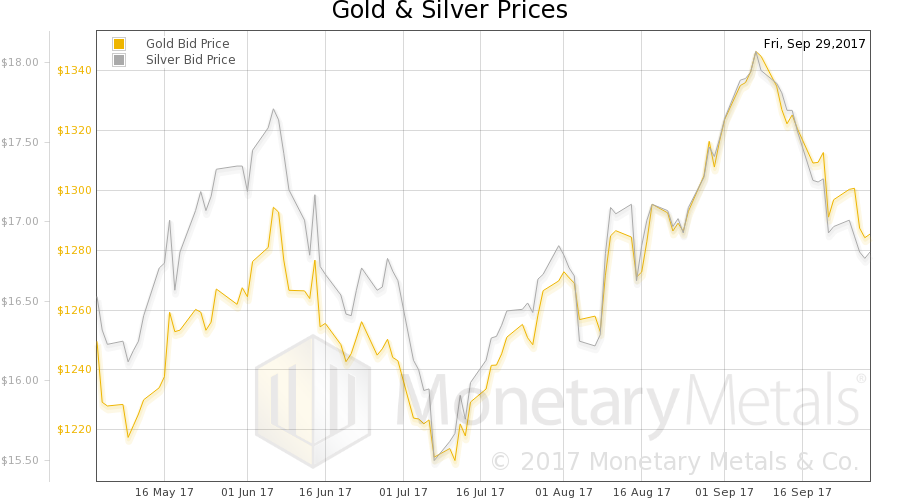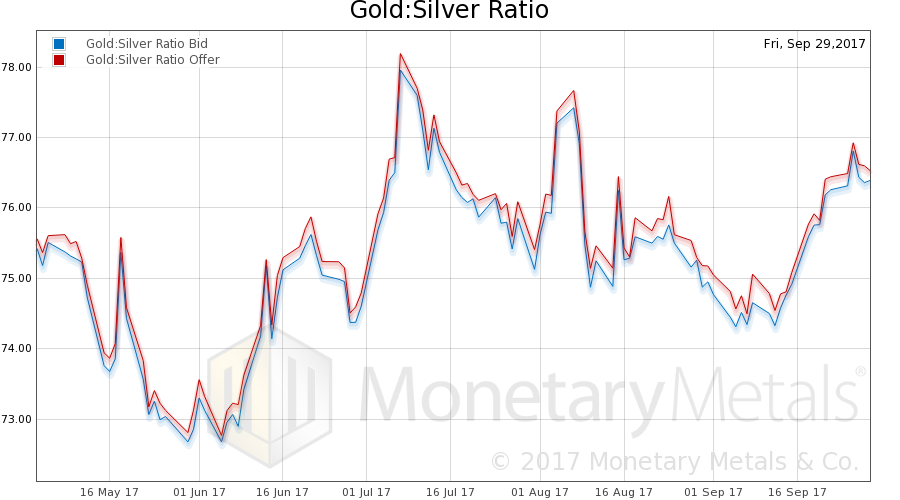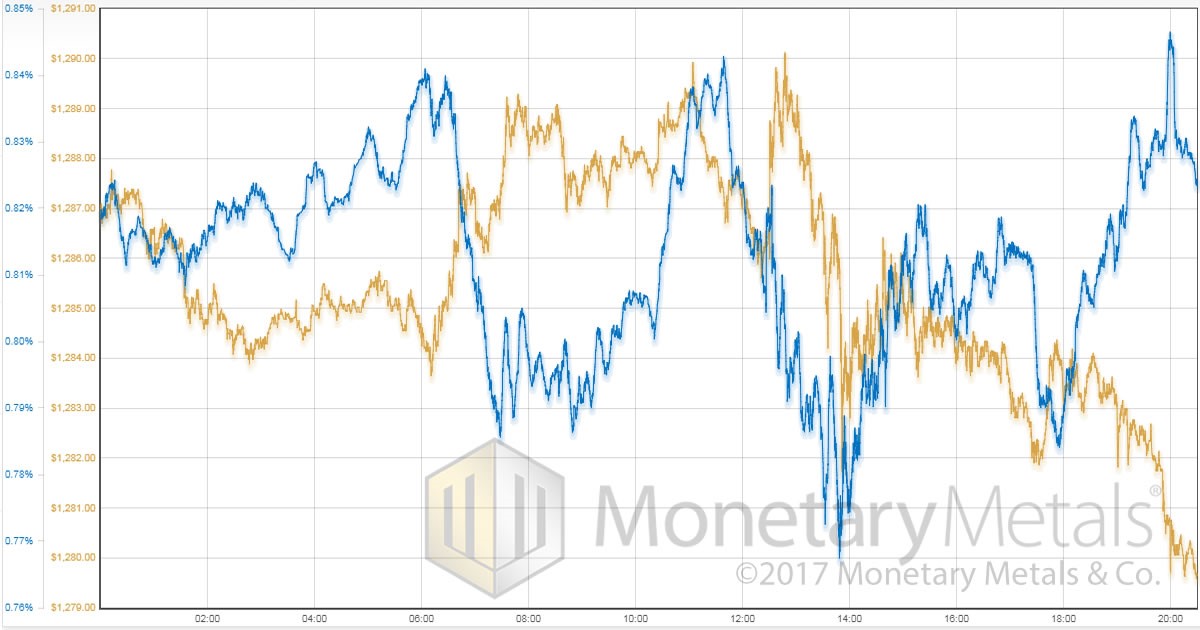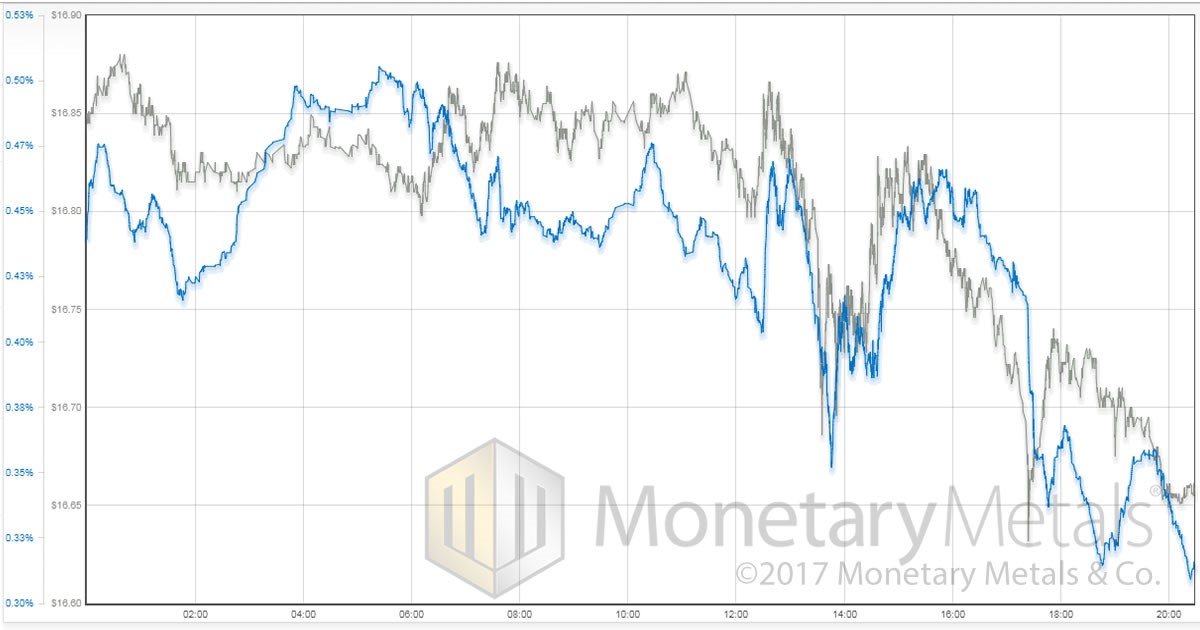Is That A Feature Or A Bug? Beware Bitcoin!
We have covered many reasons why bitcoin is unsound and not money. It’s a ledger of unbacked liabilities. It is designed to have finite quantity but therefore indeterminate and hence volatile value. This makes it unusable for borrowing or lending and hence savings, but a great a vehicle for conversion of one person’s wealth into another’s income. It is not a commodity—discussion of the usefulness of the network notwithstanding—nor is it backed by a commodity or any asset. It is a perfect, cryptographically secure record—of itself. People use it to get rich quick. In other words, it’s the very model of a (post)modern monetary marvel (OK, Keith is not the next Gilbert and Sullivan).
And bitcoin has a questionable feature. Transactions are irreversible.
First it should be addressed that irreversible transactions have an appeal to merchants. Everyone who sells on eBay knows the frustration of shipping merchandise to a customer only to have the customer claim it was never received. Merchants would surely love the idea that once payment is made, it cannot be unmade.
However, there are good reasons why our payments system was designed as it is. Sometimes there is a clear mistake. No one has an interest in allowing the payee to keep $100,000 when $10,000 was the purchase price of the used car. No one wants to see Jon Schmidt get the money that was intended for John Smith. There is also the occasional case of fraud. If someone breaks into your account, you want recourse to recover the lost funds. Irreversible transactions are not a dream come true for consumers who are defrauded by merchants.
Consider that bitcoin’s designer, Satoshi, built the system so that transactions cannot be reversed. Is this a merchant’s dream come true? Or a criminal’s? Qui bono (who benefits?) It is hard to even think of a good legitimate case for this.
Now also consider that bitcoin was designed so payments can be sent and received anonymously. You not only cannot reverse a transaction, but you don’t even know who got it, so there is no way to know who to sue in court. Your money (well your bitcoin) is irretrievably lost.
The combination of irreversible and anonymous may still seem to have some legitimate appeal, but let’s acknowledge the elephant in the room. It’s perfect for criminals. Anyone who sells fake driver’s licenses or murder for hire would love it.
As an aside, bitcoin’s anonymity is not perfect. The ledger shows every transaction, which means that if your identity is ever discovered, anyone can go through the history of what you have done. For example, if you sell bitcoins in an account at an exchange, and wire the dollars to your bank account.
To address this problem, there is the bitcoin mixer. It is designed to mix up your bitcoins with the bitcoins of others who also want to hide the identity of their coins and their origin. It seems almost as if it is designed for money laundering. While irreversible transactions may have some legitimate use cases, this is a whole ‘nother beast. If you steal millions of dollars of bitcoin from an exchange, hack a DAO, sell rocket launchers to terrorists, or even infect companies with ransomware, the mixer is great. You need a way to get paid, without anyone being able trace your loot.
It’s just like bags of cash left in the phone booth at 2am across the street from the all-night diner (as we recall from detective shows in the 1970’s), only better. In those shows, the bad guy always demanded “unmarked” bills, but no one ever clearly showed what “marked” vs. “unmarked” looked like. Well (we assume) bitcoins that have been tumbled are unmarked.
Irreversibility, anonymity, and untraceable unmarked bills. That may still sound attractive to a consumer, an end user of the system. However, that is not the main question, which is: are these desirable features for businesses who sell you things? Are they appropriate features for financial businesses who ask you to trust them with your life savings?
If no trust is possible, if civil society ever breaks down so far that no one can trust anyone else, that transactions are conducted between two armed groups with cash exchanged for goods under cover of more armed men with rifles, then we will have arrived in Keynes’ long run—a dark age. This has not happened just yet. So let’s continue with our inquiry into the nature of anonymity, irreversibility, and untraceability.
It takes us now to the concept of transparency. Let’s look at some examples outside finance. A grocer sells tomatoes labeled “locally grown”. Consumers want to be able to trust the label, and not have to be suspicious that they were really grown in Venezuela. If E Coli breaks out, everyone has an interest in tracing the tainted produce back to the packaging plant or farm which introduced the bacteria.
If a solar panel company tells you that its panels generate 15 watts per square foot, you want to trust that it is not only telling the truth but the whole truth. Is this figure for residents of a high altitude southern desert like Albuquerque or is it for a northern city like Oslo?
If an electric car company claims that its HEPA air filter is good enough to block biological warfare agents, buyers want to know if this has been validated by a credible third party.
It’s one thing if such marketing claims are mere puffery. We don’t know if any Tesla buyers are planning to drive through war zones where anthrax bacteria are in the air. We assume it is more about so called bragging rights:
“Oh yeah, your 911 turbo S can out-accelerate my Tesla in super-duper ludicrous insane mode?! Well can it do it under conditions of biological warfare??”
It is quite another when a company custodies client assets, or brokers or conducts financial transactions. A responsible financial business thinks constantly about—and establishes systems and controls for—conflicts of interest, unsustainable structures, shady transactions, and all factors which affect pricing or execution for its clients. For example, Monetary Metals publishes graphs of the offers that set the gold interest rate in its lease auctions.
You would expect disclosure statements, documented processes, guidance from a credible law firm, and an auditor—not to mention due diligence. Conversely, if a firm seems optimized to avoid government scrutiny, if there is no way to discover who owns it much less its liabilities, then it may not be seeking to build a great business for the long term.
Like it or not, we live in a world which is demanding more transparency from the companies we trust. And consumers and savers should like it.
In this light, let’s look at two interesting promises of the blockchain, One, there is no need to trust in a counterparty. Two, it enables realtime audit and verification.
The reality is any coalition of miners that controls a majority of the mining power can do whatever they want. For example, they can fork to undo a transaction. Whether you realize it or not, you are giving your trust to them—whomever they are. As the capital investment required to be a serious player in bitcoin mining has increased, mining power has consolidated. As the electricity consumption of serious mining power increased, miners consolidated in regions with subsidized electricity prices.
We do not believe that most people understand or appreciate that bitcoin governance is political.
As to realtime audit, how many cryptocurrency financial firms show even just their assets on the blockchain? (This would be of limited value without the liabilities also). It is telling that MtGox, before it collapsed, was a leading (if not the leading) bitcoin exchange and account provider. Serious allegations have emerged that MtGox was operating in a state of insolvency for years. A leading firm in the space. It was insolvent for years. A leading firm. Think about that. Take as long as you need.
The hype-reality spread is wide indeed.
Finally, we get to the so called Initial Coin Offering, or ICO. Raising capital is difficult and expensive under securities regulations. Many regulations serve to protect incumbents (see this article by Keith). It would seem to be a good thing to bypass all this, and sell a newfangled thing that is not called a security but a token.
However, it must be said that early-stage companies are risky. Regulation or no regulation, a responsible entrepreneur does not raise capital from people who don’t understand the risks and/or cannot afford to bear them. Yes, that means retirees living on a fixed pension. Responsible entrepreneurs do not promote their offerings with unrealistic promises of huge gains, while omitting a discussion of risks. They certainly do not use the proceeds to speculate on asset prices or plow them into the next startup’s hot deal (said next startup having an undisclosed relationship with management, of course).
For that matter, and this also needs to be said, no good comes of raising too much money too early in a company’s development. In a sane world, investors do not inject $30,000,000 into a company with a white paper and a partial management team. So what does that make the ICO world?
As the bitcoin mixer is designed to help criminals evade law enforcement, the ICO is designed to help businesses raise money that they have no business raising.
We are not lawyers, however one thing seems clear enough. The tokens sold in ICOs are securities. Sooner or later, regulators will crack down on issuers. And if innocent investors are bilked of their savings, the crackdown will be sooner.
This discussion brings us full circle. Bitcoin proponents will tell you that bitcoin is going to a million dollars. That may be, but it helps make our point that while the price is going up everyone is happy and fraud often goes undiscovered. Bernie Madoff was not caught until December 2008, when stocks crashed in the global financial crisis. If the Fed had kept the boom going for another 5 years, it’s likely that Madoff would have gotten away with it until 2013.
We are not, by the way, big fans of prior restraint regulation. In practice, regulatory compliance—whatever its stated intent—often means guilty until proven innocent. It demands that you constantly prove your innocence, at your own expense, under threat of being convicted of the crime of not complying.
However, we firmly believe that if a crime is committed then law enforcement should obtain a warrant and ask financial intermediaries for documentation related to the suspicious transactions and persons of interest. And we believe that responsible businesses keep records of transactions and clients for a number of reasons, including that they want to assist law enforcement catch criminals. No honest person benefits from aiding and abetting criminals.
A responsible financial business makes money by making money for its clients. It does so whether it operates in a free market or in a severe regulatory environment. Conversely, regulation does not stop the bad actors. Witness Bernie Madoff, who stole tens of billions, in a Ponzi scheme that endured perhaps 30 years (the start of the great boom fueled by falling interest rates since 1981).
Regulation, or not, a responsible business does not tout incredible gains, cherry pick performance numbers, conceal the source of funds, obscure its activities, ignore its liabilities, or understate or deny the risks while hyping the possible gains.
Of course, most businesses involved in bitcoin are not dishonest, the same as people elsewhere. However, it cannot be ignored that the bitcoin ecosystem has features which seem tailor-made for criminal activity.
Our final caveat is that law enforcement may allow things to proceed for years. When it enters a new technology arena, law enforcement can be like a steamroller. It doesn’t move forward quickly. However, once it grabs a toe, it will keep rolling right over the body, until it is made one with the pavement.
…
The prices of the metals dropped $17 and $0.35, and the gold-silver ratio rose to 77.
A look at the chart of either metal shows that a downtrend in prices (i.e. uptrend in the dollar) that began in mid-April reversed in mid-July. Then the prices began rising (i.e. dollar began falling). But that move ended Sep 8.
One way to think of these moves is as the addition of energy into the market. Like tossing a pebble into a still pond (not quantity of water, but energy that perturbs it). Once the speculators get the idea that gold and especially silver should go up, well it becomes self-fulfilling. Statements by the Fed, the ECB, or even the fatboy who rules North Korea can all have an effect.
Buying begets buying, as the chart shows signs of a breakout. But then, especially in this moribund market, the energy of new speculation is depleted. And the price subsides, until new energy is added by the next event. We are in that mode right now.
We will look at an updated picture of the fundamentals of supply and demand of both metals. But first, here are the charts of the prices of gold and silver, and the gold-silver ratio.
Next, this is a graph of the gold price measured in silver, otherwise known as the gold to silver ratio. The ratio rose.
In this graph, we show both bid and offer prices for the gold-silver ratio. If you were to sell gold on the bid and buy silver at the ask, that is the lower bid price. Conversely, if you sold silver on the bid and bought gold at the offer, that is the higher offer price.
For each metal, we will look at a graph of the basis and cobasis overlaid with the price of the dollar in terms of the respective metal. It will make it easier to provide brief commentary. The dollar will be represented in green, the basis in blue and cobasis in red.
Here is the intraday gold graph showing Friday’s action (you can see the regular 3-month gold basis chart).
This is interesting. From a bit after 6am (GMT) the price of gold is rising but the basis is falling. That means the buying was fundamental, i.e. gold metal was bought. This lasted until a bit after 7am. At around 10:30am, something different occurred. Speculators started buying futures. They drove the price up from $1,288 to $1,290, but this took the basis up from 0.8% to 0.83%. After that, the basis tracked the price. That is, when price was falling basis was falling (i.e. futures were being sold) and when price was rising basis rose with it (i.e. futures were bought). By the way, don’t pay too much attention to the end of the day, as particularly on a Friday liquidity is dried up and the signal can be spurious.
Our calculated Monetary Metals gold fundamental price fell $30 to $1,348.
Now let’s look at silver intraday (here is the regular daily silver basis chart).
Interestingly again, we see the same fundamental buying of silver after 6am from $16.80 to $16.86 while the basis drops from 0.5% to 0.47%. After that, like gold, the price action was driven by speculators in the futures markets.
Our calculated Monetary Metals silver fundamental price fell $0.25 to $17.05.
© 2017 Monetary Metals










 Dr. Keith Weiner is the CEO of Monetary Metals and the president of the
Dr. Keith Weiner is the CEO of Monetary Metals and the president of the 









